Electric Generators Handbook (2 Vol Set)
Original price was: ₹26,925.00.₹21,540.00Current price is: ₹21,540.00.
ISBN: 9781498723411
Author/Editor: Ion Boldea
Publisher: CRC Press
Year: 2015
1 in stock (can be backordered)
Description
Electric Generators Handbook, Second Edition: Two-Volume Set supplies state-of-the-art tools necessary to design, validate, and deploy the right power generation technologies to fulfill tomorrow’s complex energy needs.
The first volume, Synchronous Generators, explores large- and medium-power synchronous generator topologies, steady state, modeling, transients, control, design, and testing. Numerous case studies, worked-out examples, sample results, and illustrations highlight the concepts. Fully revised and updated to reflect the last decade? worth of progress in the field, the Second Edition adds coverage of high-power wind generators with fewer or no PMs, PM-assisted DC-excited salient pole synchronous generators, autonomous synchronous generators?control, line switching parameter identification for isolated grids, synthetic back-to-back load testing with inverter supply, and more.
The second volume, Variable Speed Generators, provides extensive coverage of variable speed generators in distributed generation and renewable energy applications around the world. Numerous design and control examples illustrate the exposition. Fully revised and updated to reflect the last decade? worth of progress in the field, the Second Edition adds material on doubly fed induction generator control under unbalanced voltage sags and nonlinear loads, interior permanent magnet claw-pole-alternator systems, high power factor Vernier PM generators, PM-assisted reluctance synchronous motors/generators for electric hybrid vehicles, and more
Additional information
| Weight | 2.25 kg |
|---|
Product Properties
| Year of Publication | 2015 |
|---|---|
| Table of Contents | Electric Energy and Electric Generators Introduction Major Energy Sources Limitations of Electric Power Generation Electric Power Generation From Electric Generators to Electric Loads Summary References Principles of Electric Generators Three Types of Electric Generators Synchronous Generators Permanent Magnet Synchronous Generators Homopolar Synchronous Generator Induction Generator Wound-Rotor Doubly Fed Induction Generator Parametric Generators Electric Generator Applications High-Power Wind Generators Summary References Prime Movers Introduction Steam Turbines Steam Turbine Modeling Speed Governors for Steam Turbines Gas Turbines Diesel Engines Stirling Engines Hydraulic Turbines Wind Turbines Summary References Large- and Medium-Power Synchronous Generators: Topologies and Steady State Introduction Construction Elements Excitation Magnetic Field Two-Reaction Principle of Synchronous Generators Armature Reaction Field and Synchronous Reactances Equations for Steady State with Balanced Load Phasor Diagram Inclusion of Core Losses in the Steady-State Model Autonomous Operation of Synchronous Generators SG Operation at Power Grid (in Parallel) Unbalanced Load Steady-State Operation Measuring Xd, Xq, Z , Z0 Phase-to-Phase Short Circuit Synchronous Condenser PM-Assisted DC-Excited Salient Pole Synchronous Generators Multiphase Synchronous Machine Inductances via Winding Function Method Summary References Synchronous Generators: Modeling for Transients Introduction Phase-Variable Model dq Model Per Unit (P.U.) dq Model Steady State via the dq Model General Equivalent Circuits Magnetic Saturation Inclusion in the dq Model Operational Parameters Standstill Time-Domain Response Provoked Transients Standstill Frequency Response Simplified Models for Power System Studies Mechanical Transients Small Disturbance Electromechanical Transients Large Disturbance Transients Modeling Finite-Element SG Modeling SG Transient Modeling for Control Design Summary References Control of Synchronous Generators in Power Systems Introduction Speed Governing Basics Time Response of Speed Governors Automatic Generation Control Time Response of Speed (Frequency) and Power Angle Voltage and Reactive Power Control Basics Automatic Voltage Regulation Concept Exciters Exciter's Modeling Basic AVRs Underexcitation Voltage Power System Stabilizers Coordinated AVR-PSS and Speed Governor Control FACTS-Added Control of SG Subsynchronous Oscillations Subsynchronous Resonance Note on Autonomous Synchronous Generators' Control Summary References Design of Synchronous Generators Introduction Specifying Synchronous Generators for Power Systems Output Power Coefficient and Basic Stator Geometry Number of Stator Slots Design of Stator Winding Design of Stator Core Salient: Pole Rotor Design Damper Cage Design Design of Cylindrical Rotors Open-Circuit Saturation Curve On-Load Excitation mmf F1n Inductances and Resistances Excitation Winding Inductances Damper Winding Parameters Solid Rotor Parameters SG Transient Parameters and Time Constants Electromagnetic Field Time Harmonics Slot Ripple Time Harmonics Losses and Efficiency Exciter Design Issues Optimization Design Issues Generator/Motor Issues Summary References Testing of Synchronous Generators Acceptance Testing Testing for Performance (Saturation Curves, Segregated Losses, and Efficiency) Excitation Current under Load and Voltage Regulation Need for Determining Electrical Parameters Per Unit Values Tests for Parameters under Steady State Tests to Estimate the Subtransient and Transient Parameters Transient and Subtransient Parameters from d and q Axis Flux Decay Test at Standstill Subtransient Reactances from Standstill Single-Frequency AC Tests Standstill Frequency Response Tests Online Identification of SG Parameters Summary References Wound-Rotor Induction Generators: Steady State Introduction Construction Elements Steady-State Equations Equivalent Circuit Phasor Diagrams Operation at the Power Grid Autonomous Operation of WRIGs Operation of WRIGs in the Brushless Exciter Mode Losses and Efficiency of WRIGs Summary References Wound-Rotor Induction Generators: Transients and Control Introduction WRIG Phase Coordinate Model Space-Phasor Model of WRIG Space-Phasor Equivalent Circuits and Diagrams Approaches to WRIG Transients Static Power Converters for WRIGs Vector Control of WRIG at Power Grid Direct Power Control of WRIG at Power Grid Independent Vector Control of Positive and Negative Sequence Currents Motion-Sensorless Control Vector Control in Stand-Alone Operation Self-Starting, Synchronization, and Loading at the Power Grid Voltage and Current Low-Frequency Harmonics of WRIG Ride-Through Control of DFIG under Unbalanced Voltage Sags Stand-Alone DFIG Control under Unbalanced Nonlinear Loads Summary References Wound-Rotor Induction Generators: Design and Testing Introduction Design Specifications: An Example Stator Design Rotor Design Magnetization Current Reactances and Resistances Electrical Losses and Efficiency Testing of WRIGs Summary References Self-Excited Induction Generators Introduction Principle of Cage-Rotor Induction Machine Self-Excitation: A Qualitative View Steady-State Performance of Three-Phase SEIGs Performance Sensitivity Analysis Pole Changing SEIGs for Variable Speed Operation Unbalanced Operation of Three-Phase SEIGs One Phase Open at Power Grid Three-Phase SEIG with Single-Phase Output Two-Phase SEIGs with Single-Phase Output Three-Phase SEIG Transients Parallel Connection of SEIGs Direct Connection to Grid Transients in Cage-Rotor Induction Generators More on Power Grid Disturbance Transients in Cage-Rotor Induction Generators Summary References Stator-Converter-Controlled Induction Generators Introduction Grid-Connected SCIGs: The Control System Grid Connection and Four-Quadrant Operation of SCIGs Stand-Alone Operation of SCIG Parallel Operation of SCIGs Static Capacitor Exciter Stand-Alone IG for Pumping Systems Operation of SCIGs with DC Voltage-Controlled Output Stand-Alone SCIG with AC Output and Low Rating PWM Converter Dual Stator Winding for Grid Applications Twin Stator Winding SCIG with 50% Rating Inverter and Diode Rectifier Dual Stator Winding IG with Nested Cage Rotor Summary References Automotive Claw-Pole-Rotor Generator Systems Introduction Construction and Principle Magnetic Equivalent Circuit Modeling Three-Dimensional Finite Element Method Modeling Losses, Efficiency, and Power Factor Design Improvement Steps Lundell Starter/Generator for Hybrid Vehicles IPM Claw-Pole Alternator System for More Vehicle Braking Energy Recuperation: A Case Study Summary References Induction Starter/Alternators for Electric Hybrid Vehicles Electric Hybrid Vehicle Configuration Essential Specifications Topology Aspects of Induction Starter/Alternator ISA Space-Phasor Model and Characteristics Vector Control of ISA DTFC of ISA ISA Design Issues for Variable Speed Summary References Permanent-Magnet-Assisted Reluctance Synchronous Starter/Alternators for Electric Hybrid Vehicles Introduction Topologies of PM-RSM Finite Element Analysis dq Model of PM-RSM Steady-State Operation at No Load and Symmetric Short Circuit Design Aspects for Wide Speed Range Constant Power Operation Power Electronics for PM-RSM for Automotive Applications Control of PM-RSM for EHV State Observers without Signal Injection for Motion Sensorless Control Signal Injection Rotor Position Observers Initial and Low-Speed Rotor Position Tracking 50/100 kW, 1350-7000 rpm (600 Nm Peak Torque, 40 kg) PM-Assisted Reluctance Synchronous Motor/Generator for HEV: A Case Study Summary References Switched Reluctance Generators and Their Control Introduction Practical Topologies and Principles of Operation SRG(M) Modeling Flux/Current/Position Curves Design Issues PWM Converters for SRGs Control of SRG(M)s Direct Torque Control of SRG(M) Rotor Position and Speed Observers for Motion-Sensorless Control Output Voltage Control in SRG Double Stator SRG with Segmented Rotor Summary References Permanent Magnet Synchronous Generator Systems Introduction Practical Configurations and Their Characterization Air Gap Field Distribution, emf, and Torque Stator Core Loss Modeling Circuit Model Circuit Model of PMSG with Shunt Capacitors and AC Load Circuit Model of PMSG with Diode Rectifier Load Utilization of Third Harmonic for PMSG with Diode Rectifiers Autonomous PMSGs with Controlled Constant Speed and AC Load Grid-Connected Variable-Speed PMSG System PM Genset with Multiple Outputs Super-High-Speed PM Generators: Design Issues Super-High-Speed PM Generators: Power Electronics Control Issues Design of a 42 Vdc Battery-Controlled-Output PMSG System Methods for Testing PMSGs Grid to Stand-Alone Transition Motion-Sensorless Dual-Inverter Control of PMSG with Asymmetrical Grid Voltage Sags and Harmonics Filtering: A Case Study Note on Medium-Power Vehicular Electric Generator Systems Summary References Transverse Flux and Flux Reversal Permanent Magnet Generator Systems Introduction Three-Phase Transverse Flux Machine: Magnetic Circuit Design TFM: The dq Model and Steady State Three-Phase FR-PM Generator: Magnetic and Electric Circuit Design High Power Factor Vernier PM Generators Summary References Linear Motion Alternators Introduction LMA Principle of Operation PM-LMA with Coil Mover Multipole LMA with Coil Plus Iron Mover PM-Mover LMAs Tubular Homopolar PM Mover Single-Coil LMA Flux Reversal LMA with Mover PM Flux Concentration PM-LMAs with Iron Mover Flux Reversal PM-LMA Tubular Configuration Control of PM-LMAs Progressive-Motion LMAs for Maglevs with Active Guideway Summary References |
| Author | Ion Boldea |
| ISBN/ISSN | 9781498723411 |
| Binding | Hardback |
| Edition | 2 |
| Publisher | CRC Press |
You must be logged in to post a review.

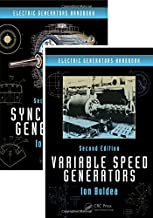
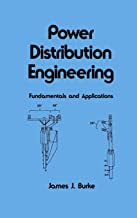
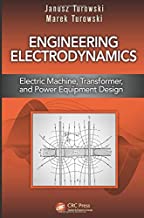
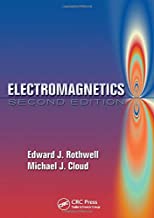
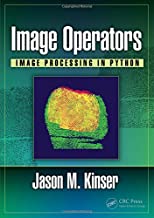
Reviews
There are no reviews yet.